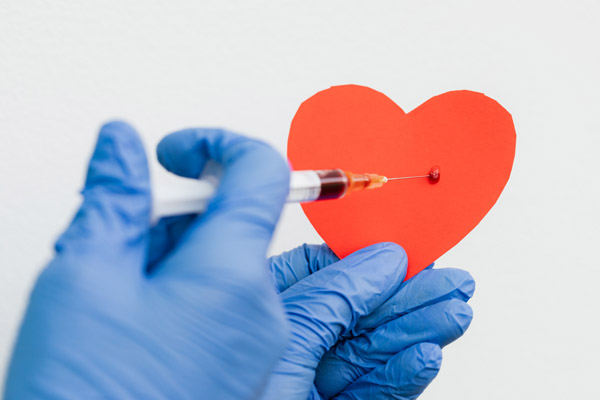The Safety and Effectiveness of Chelation Therapy for Heart Disease with Calcium EDTA

Coronary heart disease is one of the leading causes of death among both men and women in the United States. Many cardiac patients are choosing to use chelation therapy for heart disease as a form of complementary medicine. But is it safe and effective?
Claims of safety concerns caused by low calcium are no longer an issue because disodium EDTA was taken off the market. Disodium EDTA had to be infused slowly because of its effect on blood levels of calcium. We now use calcium EDTA which can be infused very quickly and is very safe. Let’s look at studies examining the effectiveness of chelation with EDTA.
EDTA and Chelation Studies
Trial to Assess Chelation Therapy (TACT):
A clinical trial called the Trial to Assess Chelation Therapy (TACT) attempted to answer the question of safety and effectiveness. This clinical trial, an NIH-sponsored multicenter, double-blind safety and efficacy study, took place from 2002-2012 and was conducted in 134 sites across the United States and Canada. During TACT, 1,708 people, 50+ years old, with previous heart attacks were randomly assigned to receive 40 infusions of a chelation solution or a placebo (inactive) infusion. Research participants also received an oral vitamin and mineral regimen, or an oral placebo.
TACT demonstrated an 18% reduction in recurrent heart events by chelation therapy for heart disease in research participants who already had sustained a heart attack. Recurrent heart events measured in the study were death, heart attack, stroke, heart bypass or stent, and hospitalization for angina (chest pains). In 633 diabetic research participants, there was an even larger benefit with a 41% reduction in recurrent heart events and a 43% reduction in deaths.
TACT was the first large-scale, multicenter clinical trial of its kind. This trial showed that IV infusions of EDTA chelation therapy for heart disease produced a medically significant reduction in cardiovascular events. Read more about this trial from the National Center for Complementary and Integrative Health: Chelation for Coronary Heart Disease.
Based on the significant results of the study, the Mount Sinai and Duke scientists who conducted the trial felt that a repeat study was important to carry out.
Trial to Assess Chelation Therapy (TACT) 2:
There is now a second trial ongoing called TACT2. The National Center for Complementary and Integrative Health (NCCIH) of the National Institutes of Health (NIH) awarded $37M to initiate the trial. The trial is also co-funded by the National Heart, Lung and Blood Institute, the National Institute of Diabetes and Digestive and Kidney Diseases, and the National Institute of Environmental Health Sciences.
TACT2 follows up on the positive results of TACT, and will narrow its focus to the group with the greatest benefit in the original study: diabetics 50+ years of age who have survived a prior heart attack. To date, 389 of 1,200 subjects have been randomized.
What is Chelation Therapy with EDTA?
Exactly how does chelation therapy with EDTA work? Because it is given as an intravenous infusion it can interact directly with the artery wall without having to pass through the stomach and liver. Essentially it acts as an antioxidant within the artery. It does this by pulling copper and iron out of the artery wall. Iron and copper are involved in the oxidation of LDL. Oxidized LDL is a major contributor to the growth of atherosclerotic plaques. Each infusion combats arterial inflammation. It is through this action that plaque can be stabilized or reduced. Effects on total body iron and copper stores are not affected significantly.
The standard protocol for chelation therapy for heart disease is 30 infusions within 12 months. This being said, some is better than none. However, if patients receive less than 20 infusions it makes it hard to assess the clinical benefit.
In my 20 years of practice, I have noticed more improvement in patients who do chelation therapy than in those who do not. Chelation therapy alone is not nearly as good as undergoing a complete workup and treating all factors that contribute to atherosclerosis. A heart healthy diet, stress reduction, and exercise are critically important.

